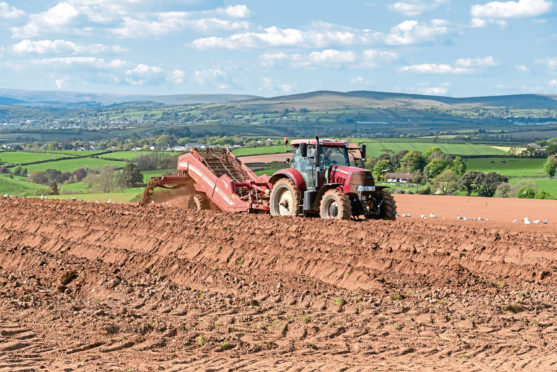Arable margins can be boosted by focusing on fixed costs, such as machinery and labour, rather than inputs.
Those were the findings of the farmer-led 4Sight Farming project, funded by the Scottish Government’s knowledge transfer and innovation fund and led by Scottish Agronomy.
The aim of the 12-month project, which involved 30 growers across Scotland, was to capture the true fixed costs of running an arable or potato enterprise and to learn more about how lean thinking could improve processes to reduce waste of time and money in farming businesses.
Lean thinking – a process traditionally used in the manufacturing sector – assesses where waste and unnecessary time and effort can be eliminated to improve processes and profit.
“While the majority of benchmarking projects look at production costs and focus on variable inputs, we wanted to focus on the operational costs of machinery and labour,” said Scottish Agronomy’s senior agronomist Eric Anderson, who initiated the project.
“With accurate, detailed records you can make objective, data-driven decisions to minimise these fixed costs and ultimately boost the bottom line, which is essential in the unpredictable times we are facing.”
He said detailed analysis of labour and machinery costs across the farms in the project was carried out by EQ Accountants, then shared with project participants to let them compare themselves to similar businesses and discuss where they could make changes to improve processes.
“The project showed everyone is different but by having the data it can help each of these farmers determine if a fixed cost is positively or negatively affecting the profit line,” added Mr Anderson.
He said companies with a firm grasp on fixed costs were more likely to survive future challenges such as a reduction in subsidies.
“If profit margins shrink and commodity prices go down, operations with high fixed costs could see prolonged periods of losses,” he added.
Vicky Tait, who recently returned to her family farm near North Berwick, was involved in the project.
She said: “For me, the project has highlighted that there is no silver bullet – it’s not expand or buy new versus consolidate or keep old machinery going for as long as possible.
“What is has shown, however, is that by having accurate records about operating costs for each enterprise you can make decisions based on data and adjust costs accordingly.”
